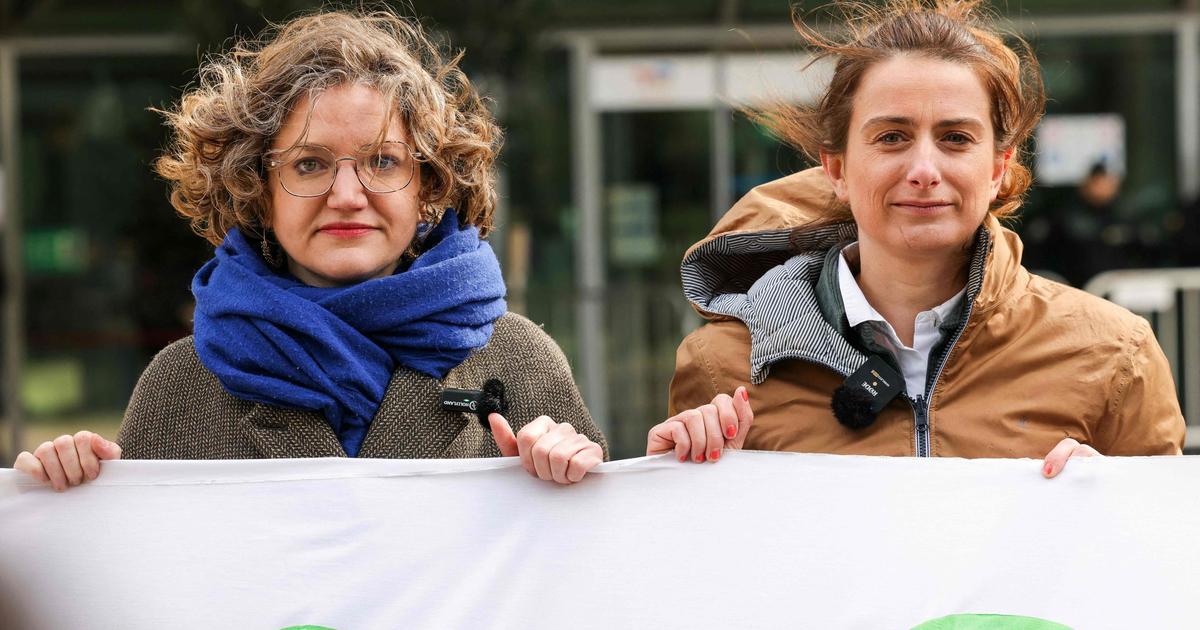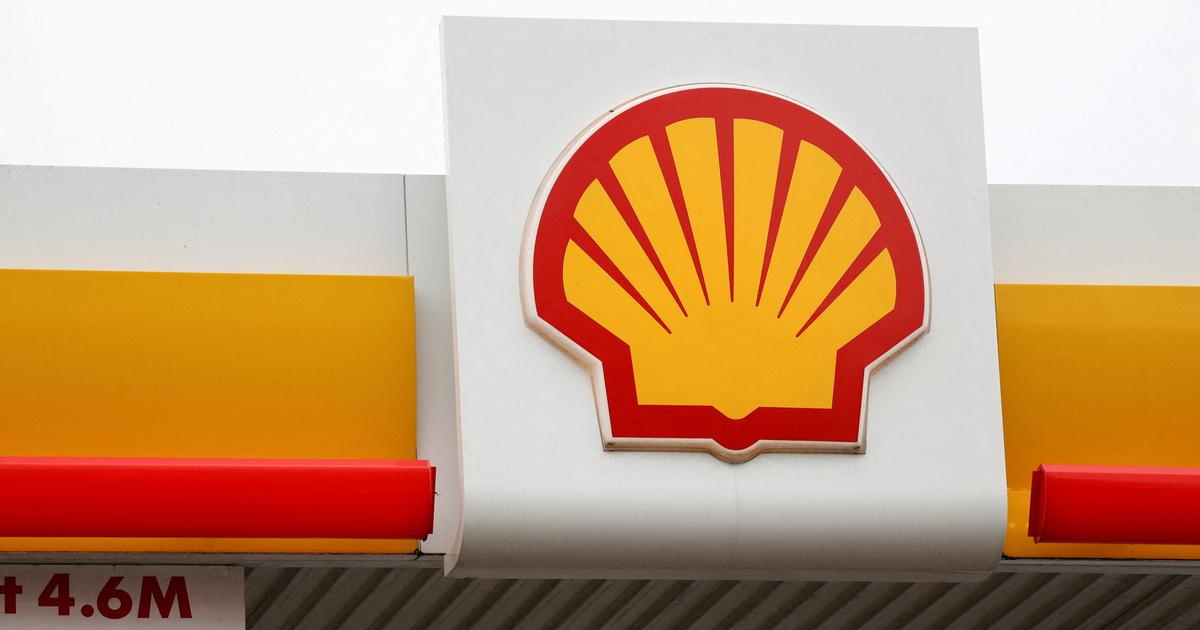Enlarge image
Photo: iStockphoto / Getty Images
Chances are you're feeling pretty warm as you read this column.
And no, that's not "normal" - in many places in Europe, temperatures are 12 to 16 degrees above the long-term average for this time of year.
In the US state of Kansas, meanwhile, thousands of cattle have died due to the humid heat lying around in the landscape, in Nebraska this week there was a tornado “supercell” with hailstones the size of table tennis balls, life-threatening storms also occurred in Indiana and Wisconsin.
In Yellowstone National Park and the surrounding area of Wyoming, flooding was so extreme that bridges were swept away.
Outdoor events and indoor events without air conditioning have been banned in parts of France.
Several cities set up smoke machines outdoors.
As a reminder: A person cannot survive certain temperatures for a long time if the humidity is high.
According to a new study, this temperature is “well below 35 degrees Celsius”.
The French Interior Ministry warned on Twitter that one should “not expose oneself to the weather”.
"Weather" means what used to be called "summer".
In Spain and France, the forest is burning in many places because it is not only extremely hot, but also extremely dry.
Incidentally, this is also a major problem for France's nuclear power plants.
One must never forget that all of this is still just the beginning.
It's only really starting now, it's not getting better for the time being, it's only getting worse.
But from a global perspective, we continue to generate more CO₂ year after year, not less.
I have written several times in this column that a vast number of people seem to continue to largely ignore these extremely threatening facts.
I have also discussed psychological explanations for this blindness several times, and what is changing about these factors.
But is this change fast enough?
Everyone I've spoken to about this topic over the past few months (quite a few) is haunted by this question more than anything else: television stars and economists, 80-year-old environmental veterans and 20-year-old activists, directors, philosophers, journalists, students.
How can it be that people are still so calm?
An enlightening conversation with the chimney sweep
As bitter as that sounds, many people are probably still not too afraid of the climate crisis, but too little.
Otherwise election results would have to look different, political debates would have to be different.
Otherwise more would simply have to happen that is going in the right direction and not further in the wrong direction.
This week I had an enlightening conversation with our chimney sweep.
She has brought me a decisive step forward with this question.
The chimney sweep is a friendly man with a gray mustache.
A hands-on guy who is interested in technology.
He was amazed to find that our chimney hadn't been used at all.
We have a wood stove for emergencies, but unless the electricity goes out we don't use it even in the winter.
And our house is excellently insulated.
Then we talked about the weather.
About the temperatures in France and Spain, about the upcoming weekend in Germany.
"No, that's getting less again"
"This is getting worse now," I said.
"No, that's getting less again," he replied, "the earth is shaking."
Something about the distance from the sun.
He then pointed out that "CO₂ and nitrogen" had always existed on earth, and that volcanoes also emitted CO₂.
I strongly disagreed and gave a short presentation on atmospheric CO₂ concentrations and how they have been rising over the past 70 years, on excavated ancient carbon that we have been burning for 220 years, and so on.
When it came to the CO₂ concentration, my chimney sweep threw in the correct unit of measurement “ppm” (parts per million) to signal that I wasn’t telling him anything new.
That was the first moment of realization in the conversation: the man definitely knows what's really going on.
But he prefers to tell a different story to himself and to anyone who will listen.
advertisement
Christian Stocker
We are the experiment
Publisher: Karl Blessing
Number of pages: 384
Publisher: Karl Blessing
Number of pages: 384
Buy for €22.00
price query time
06/19/2022 4:32 p.m
No guarantee
Order from Amazon
Order from Thalia
Order from Weltbild
Product reviews are purely editorial and independent.
Via the so-called affiliate links above, we usually receive a commission from the retailer when you make a purchase.
More information here
Why I don't care about the gas price
Of course, that was the wrong address for me, but I didn't want to argue either.
So, trying to turn the conversation on a positive note, I started gushing about our geothermal heat pump and the photovoltaic system on our roof and the fact that I personally don't care about the current gas price.
"Yes, but how much CO₂ is there in the solar cells?" my chimney sweep asked, now apparently interested in avoiding CO₂.
I assured him that, contrary to such frequently raised objections, solar cells pay for themselves very quickly in terms of climate technology, but unfortunately I didn't have a number ready.
In the meantime I checked: According to a study by the Federal Environment Agency from 2021, the so-called energy payback time of a solar system operated in Germany is between 0.9 and 2.1 years, depending on the cell technology used.
At the latest then it is good for the global climate.
The wind turbine has to run for 750 years?
But my chimney sweep didn't give up, always with a friendly smile: Older wind turbines, which were still made of aluminum at the time, would only be climate-neutral after 750 years, he claimed.
I replied that I'd like to know the source of that statement, and he mumbled something about "Reader's Digest."
He also knew, as it turned out, that modern wind turbines are constructed in a completely different way - but what came to mind on the subject was this grotesque pseudo-information, unrelated to current reality.
In psychology this is called "upgrading of consonant information".
Like a smoker who knows a smoker who has turned 90.
I resorted to a strategy that seems promising lately and pointed to the real enemy on this issue: the fossil fuel corporations that have funded massive sums of money for decades to fund disinformation campaigns, among other things, to present any alternative to their business models as impossible.
Each of the corporations spends tens of millions a year on lobbying, I added, and that's true: BP spends $53 million, Shell 49, ExxonMobil 41, and Chevron and Total each $29 million -- a year.
Altogether at least 200 million dollars per year to prevent effective climate legislation.
By the way, that's not what I'm saying, that's what »Forbes« says .
The chimney sweep nodded gravely.
No, a wind turbine is CO₂-neutral after 11 months
A quick answer to the question of when wind turbines will have amortized their CO₂ production costs: According to the study by the Federal Environment Agency mentioned, it will take 2, depending on which electricity mix you compare them with and where they are (offshore is even better than onshore 5 to 11 months.
Many of the pseudo-arguments floating around are so easy to refute.
At this point, my chimney sweep told the story of an acquaintance who had just installed a small wind turbine on his terraced house.
After 2 days, the man called desperately and asked "to dismantle the thing again".
The whole row of houses vibrated constantly, cracks appeared in the masonry - and the performance of the system was lower than stated.
Coincidentally, I had already dealt with the possibility of private wind power generation and was therefore able to point out that private systems in residential areas, even more systems that are attached directly to the house, are generally described by reputable advisers as a crazy idea.
And now for the positive
My chimney sweep then told, now quite benevolently, about his brother-in-law, who of course had long since built solar cells on his tiny little house on a Mediterranean island and was "almost self-sufficient".
The brother-in-law is now thinking about adding a small wind turbine.
The chimney sweep referred to the small wind turbines that sailors like himself use to charge their boats' batteries and spoke informed about the problematic interaction between solar cells and sea water.
Then we said goodbye to each other.
Only after the conversation did I realize what I had just experienced.
My chimney sweep is someone whose livelihood depends on maintaining stuff burning facilities.
But also someone who is interested in technology and energy supply.
The blur cloud
In his head there seems to be a kind of blur cloud on the subject of the climate crisis, from which what is suitable is fished out: Yes, it's getting hotter at the moment, but "that will pass again, the earth is shaking", "there was already always CO₂ and nitrogen«, »volcanoes also produce CO₂«.
But if you drill down, the unit of measurement »ppm« is also present.
OK yes.
CO₂ might be a problem after all.
And yes: It is suspicious that people with a lot of money have been deliberately lying to us for decades.
When this threshold has been crossed, i.e. it has been agreed that there is man-made global warming and that there are concrete culprits, there is another layer of anecdotes, half-knowledge and pseudo-knowledge that serve to distort confirmation: »Wind power and solar energy are not CO₂-neutral either «, »private wind turbines bring nothing and destroy houses«.
more on the subject
Leak from the Federal Ministry of Economics: Waiting for the climate change by Susanne Götze and Arvid Kaiser
The cloud in my chimney sweep's head is, so to speak, the perfect embodiment of decades of denialist propaganda by oil and coal companies and, at the same time, of the "sowing doubts about possibilities for change" propaganda of organizations such as the "Initiative New Social Market Economy."
This is what the cloud looks like:
Layer 1: Denying, dismissing, doubting, alternative explanations
Layer 2: Accept the problem, but doubt solutions or declare them impossible
If you manage to break through both layers, you arrive at one with which one could really work socially, especially in this country: enthusiasm for pragmatic, technical solutions, for potential savings, for »self-sufficiency«.
So for solutions.









